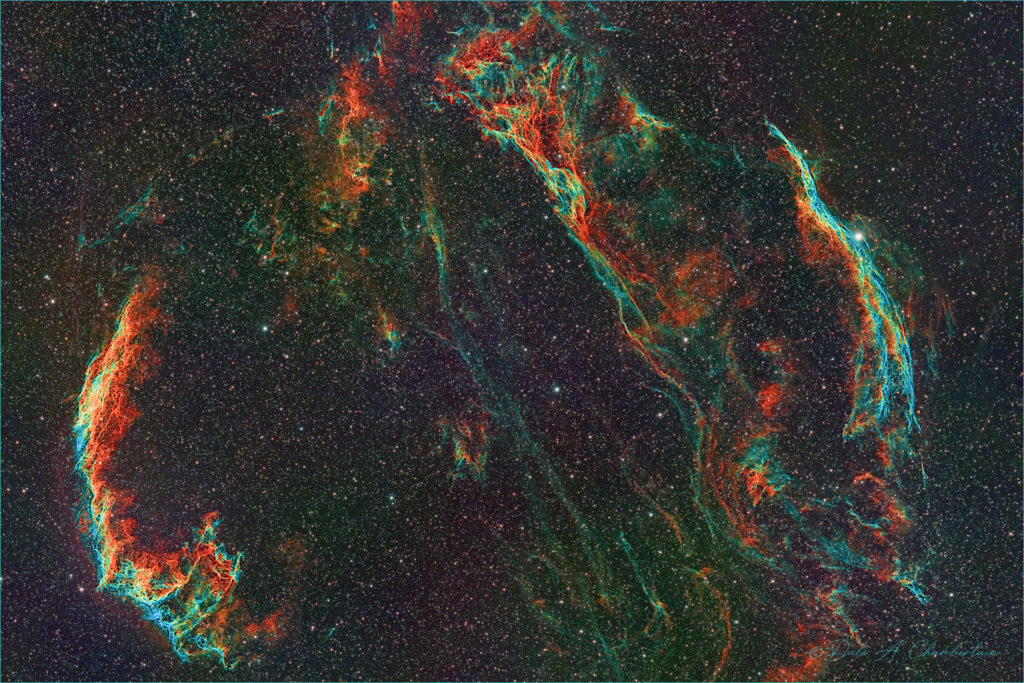
Object: Cygnus Loop, a group of bright nebulae (Lacework Nebula, Veil Nebula, and the nebulae NGC 6960, 6979, 6992, and 6995) in the constellation Cygnus, thought to be remnants of a supernova—i.e., of the explosion of a star probably 10,000 years ago.
The Loop, a strong source of radio waves and X-rays, is still expanding at about 100 km (60 miles) per second. It lies about 1,800 light-years from Earth.
Several components have separate names and identifiers, including the “Western Veil” or “Witch’s Broom”, the “Eastern Veil”, and Pickering’s Triangle. Efforts have been made recently to measure the distance using the motions of the nebular gas directly, with published estimates suggesting a firm distance of fewer than 2600 light-years. The Eastern Veil nebula appears on the left while the Western Veil (Witch’s Broom) nebula is on the right. Pickering’s Triangle is just to the upper left of the Western Veil.
Taken: June 22, 2022
Telescope: Skywatcher Esprit 80 ED Triplet APO Refractor
Mount: Paramount ME II
Camera: ZWO ASI2600MC-Pro (cooled to 0C; Gain 100) Bin 1×1.
Guiding: No autoguiding
Focuser: Starizona Micro Touch Autofocuser
Rotator: Optec Pixys LE camera field rotator
Filter Used: Radian Triad Ultra Quad Narrowband Filter
Exposures: 224×90 seconds for a total exposure time of 5 hours 36 minutes ; calibrated with 40 dark frames, 40 flat frames with 40 dark-flats.
Seeing Conditions:
Image capture and telescope control: Nighttime Imaging ‘N’ Astronomy with (N.I.N.A.) / TheSkyX Pro with a SkyShed POD MAX observatory.
Processed with PixInsight, Photoshop CC 2022